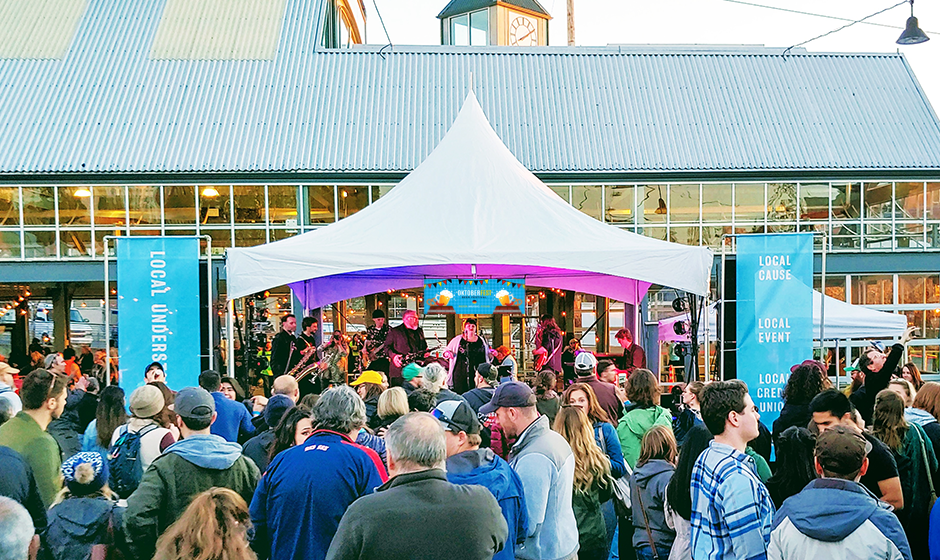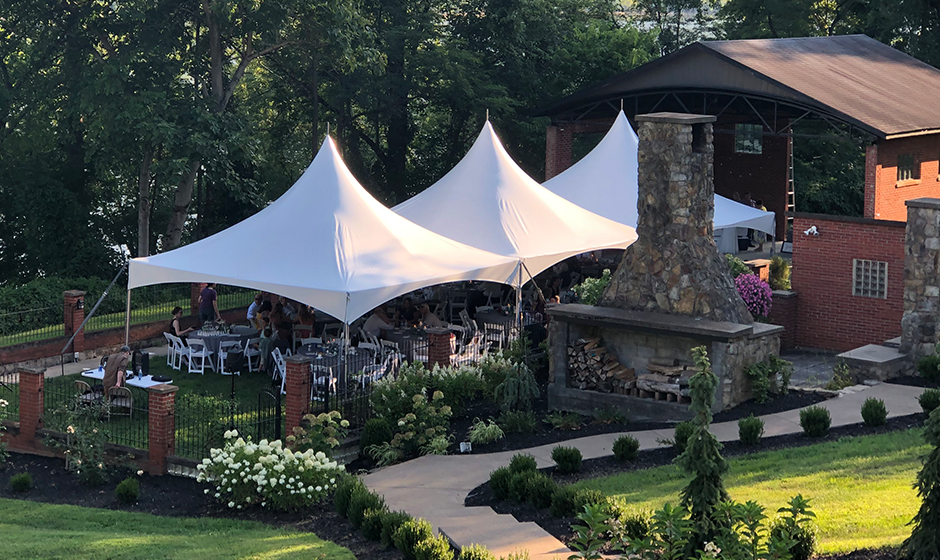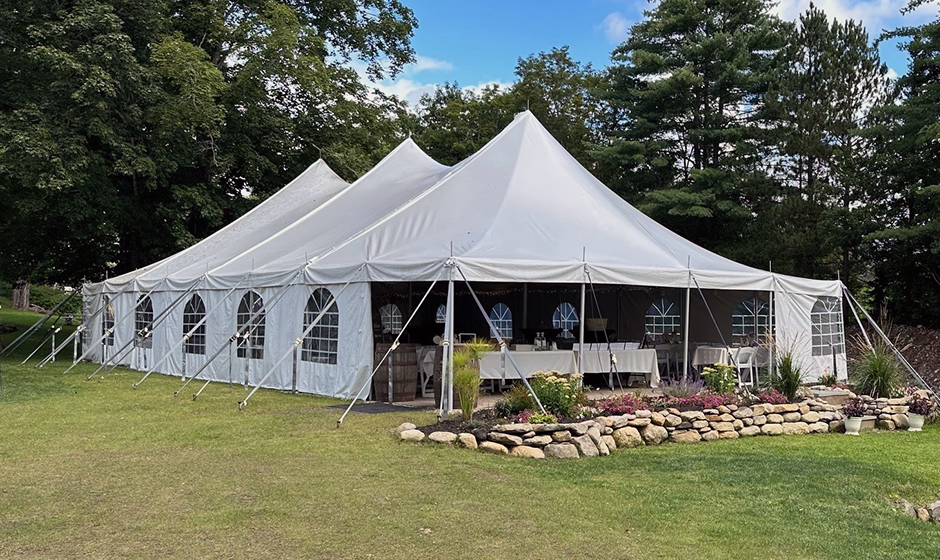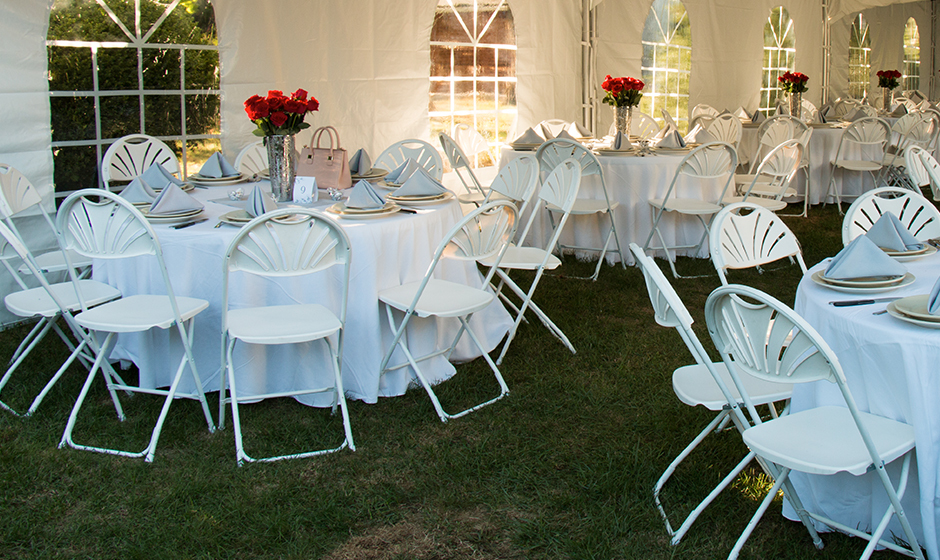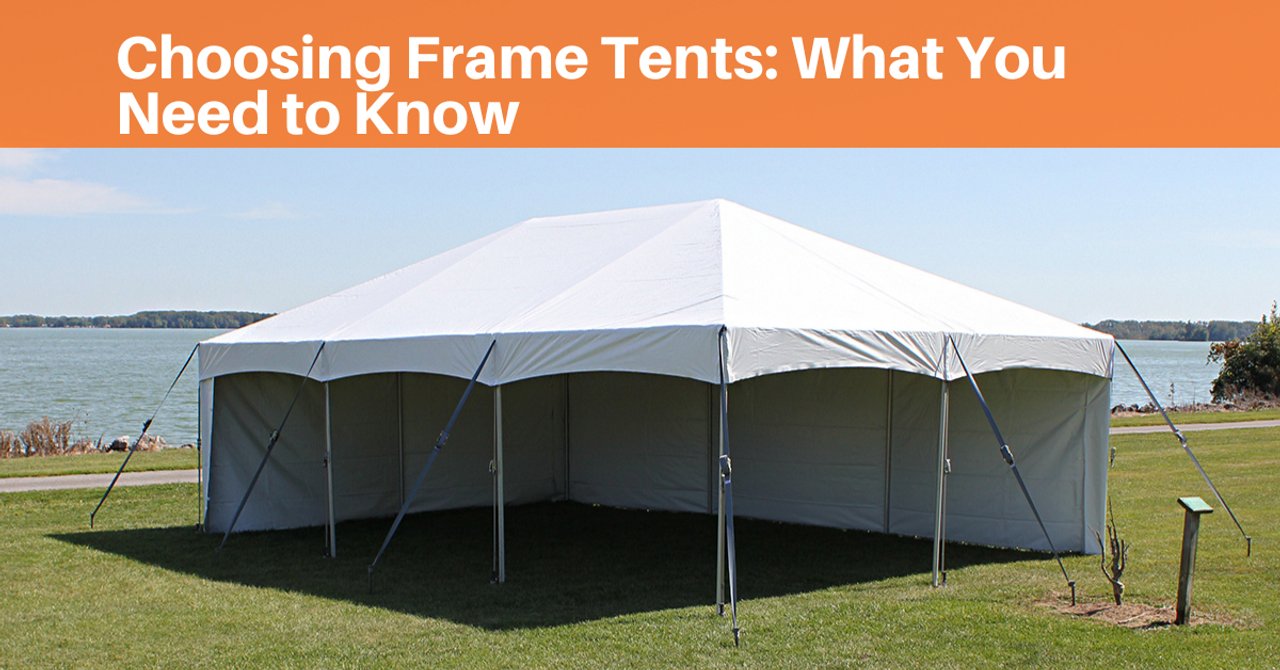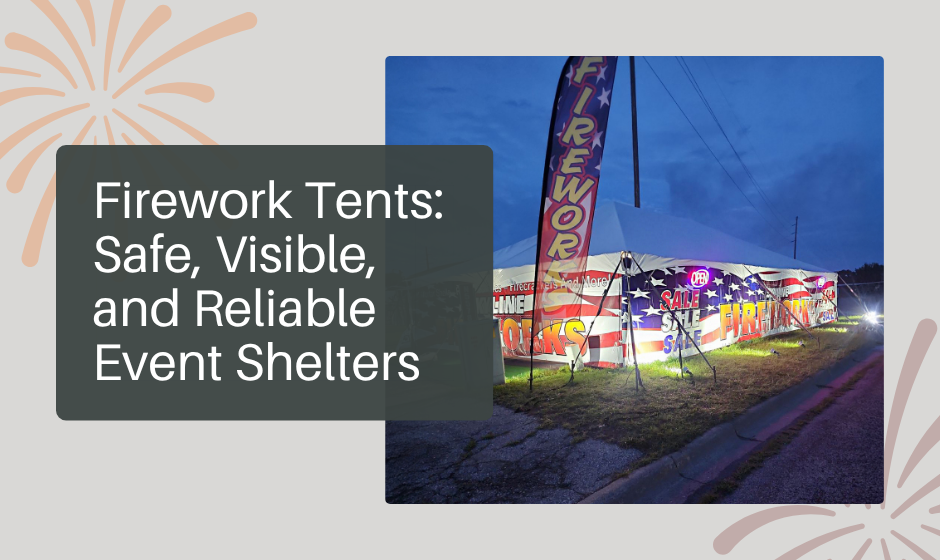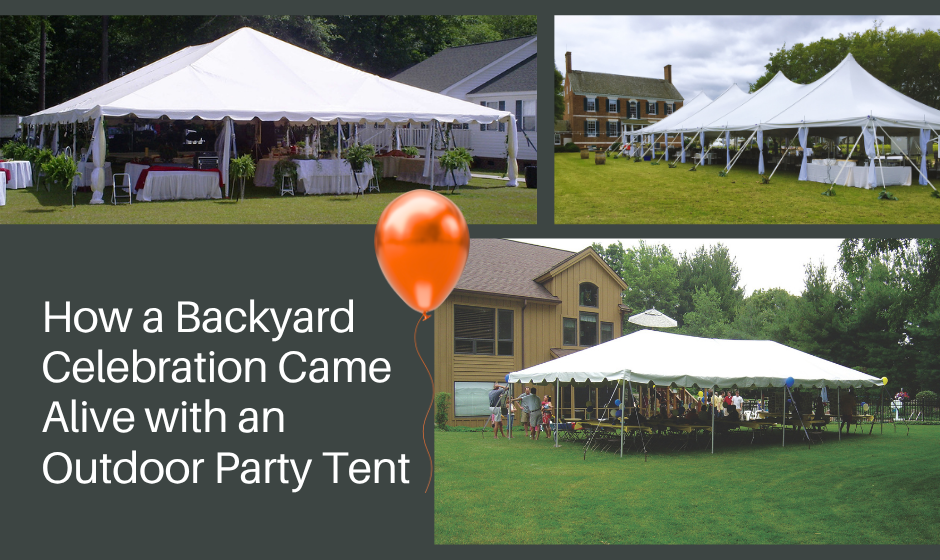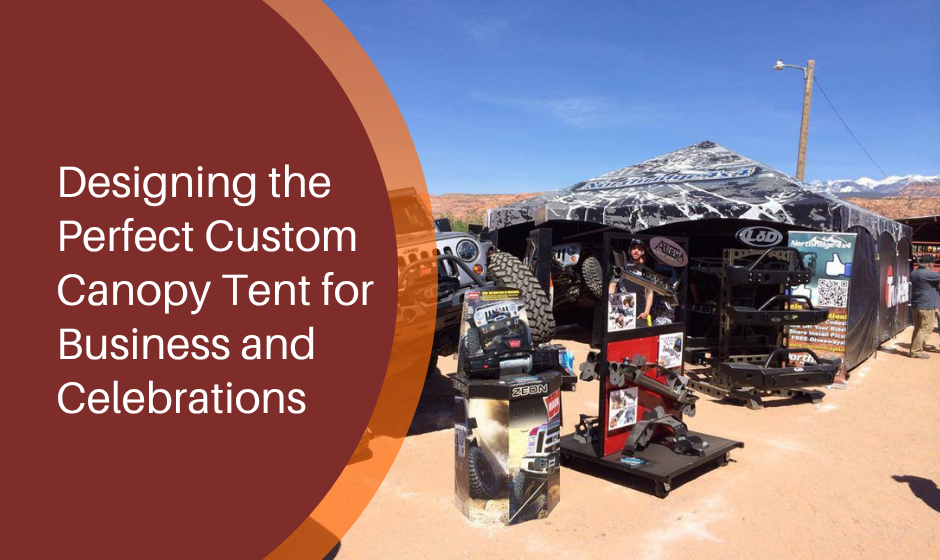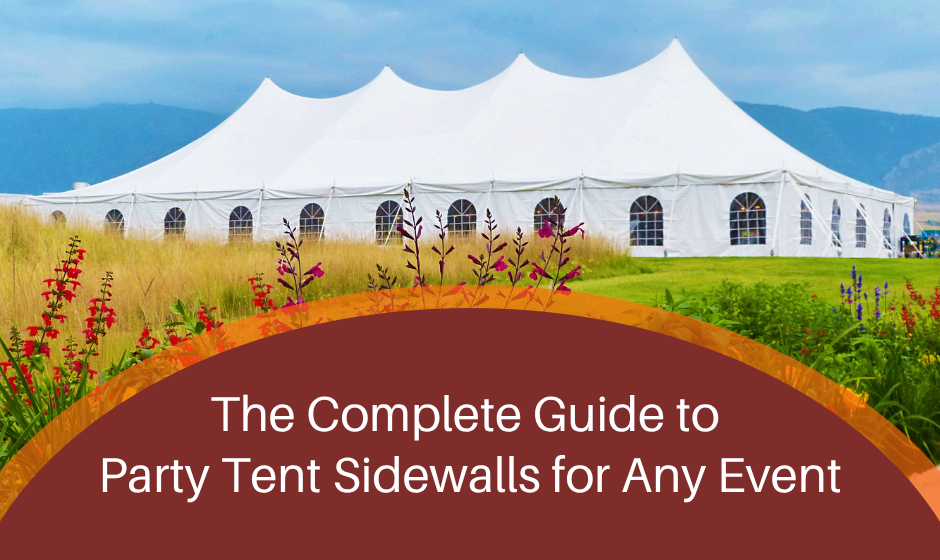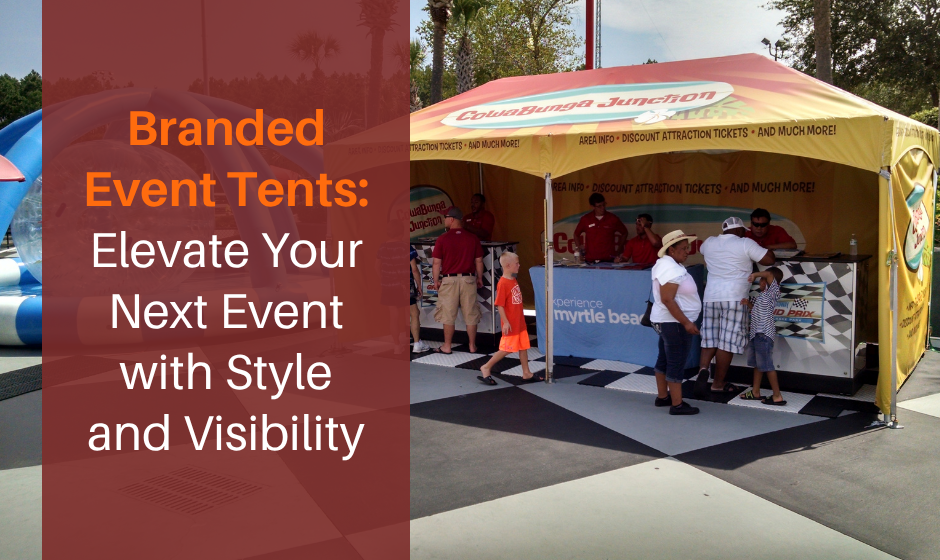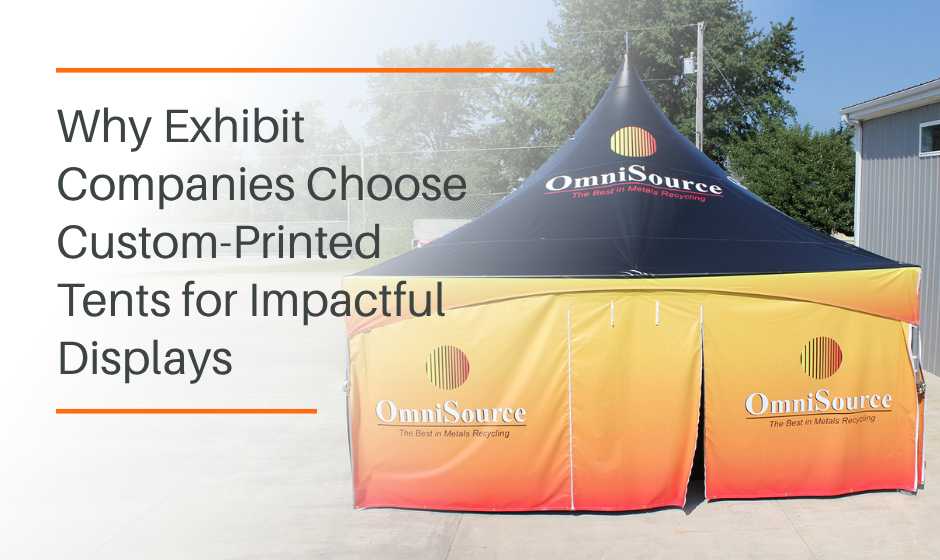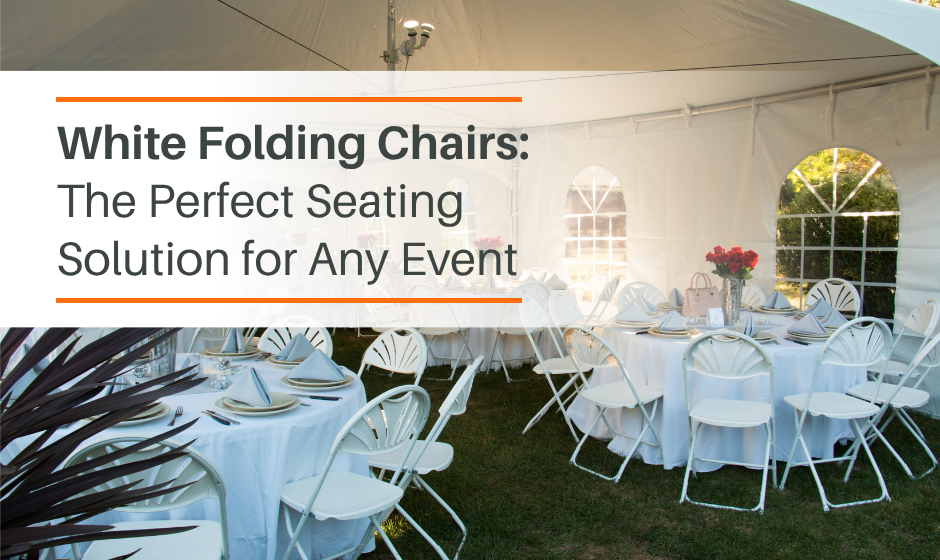Choosing Frame Tents: What You Need to Know
When planning an outdoor event, choosing the right tent is one of the most critical decisions you'll make. Frame tents are a popular option for everything from weddings to corporate gatherings and trade shows. Their versatility, strength, and ease of setup make them a go-to choice for event professionals and rental businesses.
What Are Frame Tents?
Frame tents are freestanding structures that use a metal framework—typically aluminum or steel—to support the tent top. Unlike pole tents, which require center poles for support, frame tents have no obstructions inside, providing an open, spacious layout. This design makes them ideal for events where you need to maximize usable space, such as banquets, exhibitions, and large outdoor gatherings.
Benefits of Frame Tents
1. No Center Poles, More Usable Space
One of the biggest advantages of a frame tent is that there are no center poles taking up space in the middle. This means unobstructed views—perfect for weddings and presentations—and more flexibility for seating arrangements, dance floors, or displays at trade shows.
2. Freestanding Design
Unlike pole tents that rely on staking, frame tents are self-supporting. They can be installed on concrete, asphalt, grass, or decks, making them perfect for urban or indoor-outdoor venues where staking isn’t an option.
3. Strong and Durable
Built from heavy-duty vinyl and reinforced metal frameworks, frame tents can withstand strong winds and heavy rain. Their rugged construction makes them a long-term, reliable solution for frequent use.
4. Easy to Customize
Frame tents are highly adaptable—you can add sidewalls, windows, doors, or even HVAC units for climate control. Whether you’re hosting a summer festival or winter wedding, they can be tailored for any environment.
5. Long-Term Use and Reusability
Thanks to their structural design, frame tents work well for long-term installations like outdoor dining, warehouse extensions, or semi-permanent event spaces.
Best Uses for Frame Tents
Frame tents are versatile enough for nearly any type of outdoor event, including:
- Weddings and Receptions: Open layouts ideal for elegant, unobstructed views.
- Corporate Events: Great for networking spaces, conferences, and brand activations.
- Trade Shows and Exhibits: Flexible booth layouts with no interior poles.
- Outdoor Dining: Popular for restaurants and caterers expanding seating areas.
- Festivals and Markets: Spacious layouts for crowd movement and vendor setup.
- Storage and Temporary Structures: Durable enough for warehouses or field operations.
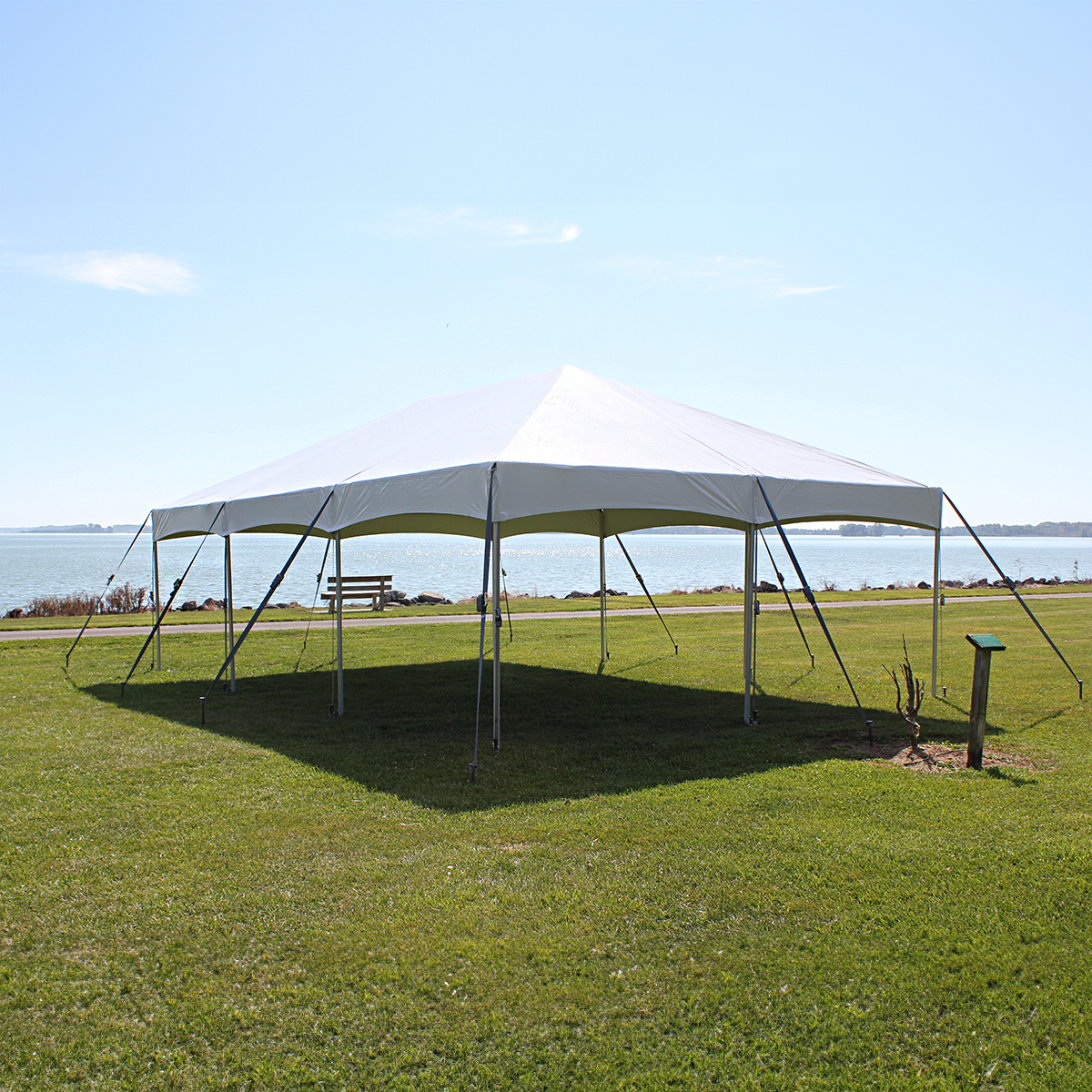
How to Set Up a Frame Tent
While setup is more complex than pole tents, frame tents provide better stability and versatility. Here’s a basic setup guide:
- Gather Materials: Frame poles, canopy top, anchoring tools (stakes, weights), and hand tools like wrenches and straps.
- Assemble the Frame: Lay out components, connect frame sections, and raise the structure securely.
- Attach the Tent Top: Spread fabric over the frame and secure with straps or bungees.
- Secure the Tent: Stake into grass or use weighted anchors for hard surfaces.
- Add Accessories: Install sidewalls, lighting, or heaters as needed.
Pro Tip: For larger tents, have a setup crew of 4–6 people or use a frame tent jack to save time and effort.
Frame Tents vs. Pole Tents
| Feature | Frame Tents | Pole Tents |
|---|---|---|
| Interior Space | No center poles, full open area | Requires center poles |
| Setup Flexibility | Can be installed on any surface | Must be staked into the ground |
| Wind Resistance | Highly stable, strong in wind | May shift in strong gusts |
| Aesthetic Appeal | Modern, professional appearance | Classic peak design |
| Setup Time | Longer setup due to frame assembly | Faster to install |
| Best For | Corporate events, weddings, long-term use | Festivals, short-term gatherings |
Choosing the Right Frame Tent for Your Needs
1. Size and Capacity
Estimate your guest count and event layout. Common frame tent sizes include:
- 20x20 ft – Small gatherings and vendor booths
- 20x40 ft – Weddings and receptions
- 40x60 ft and above – Large corporate events or festivals
2. Material Quality
Heavy-Duty Vinyl: Offers waterproofing, UV resistance, tear protection, and fire retardancy—perfect for long-term outdoor use.
Aluminum Frames: Lightweight and corrosion-resistant, great for portable and frequent setups.
Galvanized Steel Frames: Heavier and more durable for permanent or high-wind applications.
3. Accessories and Customization
Consider sidewalls, flooring, heating/cooling systems, and weighting options to tailor your setup to your environment.
4. Ease of Transport and Storage
Frequent users should prioritize tents designed for compact storage and quick assembly for efficient transport between venues.
Conclusion
Frame tents are a superior choice for many outdoor events thanks to their strength, open layouts, and customization options. They offer an elegant, professional look suitable for both casual and formal gatherings.
Whether you’re hosting a wedding, trade show, or festival, a quality frame tent ensures your event runs smoothly—rain or shine.
FAQ
What makes a frame tent different from a pole tent?
Frame tents use a freestanding metal framework that eliminates the need for center poles, giving you a completely open interior. Pole tents, on the other hand, rely on tensioned fabric and center poles for support, which can limit interior layout options. Frame tents are ideal for installations on concrete, asphalt, or grass, while pole tents require staking into the ground. The choice depends on your site conditions and the look you want to achieve.
Can frame tents be installed on hard surfaces like concrete or asphalt?
Yes. One of the main advantages of frame tents is their ability to be anchored using weight systems instead of stakes. Weighted ballasts, water barrels, or concrete anchors can secure the tent safely on hard surfaces. Always verify your anchoring method matches the tent’s engineering requirements and local safety regulations, especially for long-term or windy site conditions.
How many people are needed to set up a frame tent?
The number of installers depends on tent size, but a small 20x20 frame tent typically requires a minimum of four people. Larger structures, such as 30x60 or 40x100, may need six to eight team members and specialized equipment like tent jacks for lifting the frame safely. Following the manufacturer’s setup guide ensures efficient assembly and protects both the crew and the tent materials.
Which frame material is best: aluminum or galvanized steel?
Aluminum is lightweight, corrosion-resistant, and easy to handle, making it ideal for frequent setups or mobile event crews. Galvanized steel provides superior strength and stability for larger or long-term installations. If portability and speed matter most, choose aluminum; if you need maximum durability for harsh weather or semi-permanent use, galvanized steel is the better option. Both are engineered for commercial-grade performance.
How do I maintain and store a frame tent for long-term use?
Clean vinyl tops after each event using mild soap and water, allow them to fully dry before folding, and store them in a cool, dry area to prevent mildew. Inspect frames for loose bolts or corrosion and lubricate joints as needed. Label all hardware, fittings, and top panels for easier reassembly next time. With regular cleaning and inspection, frame tents can last for many seasons of reliable use.




